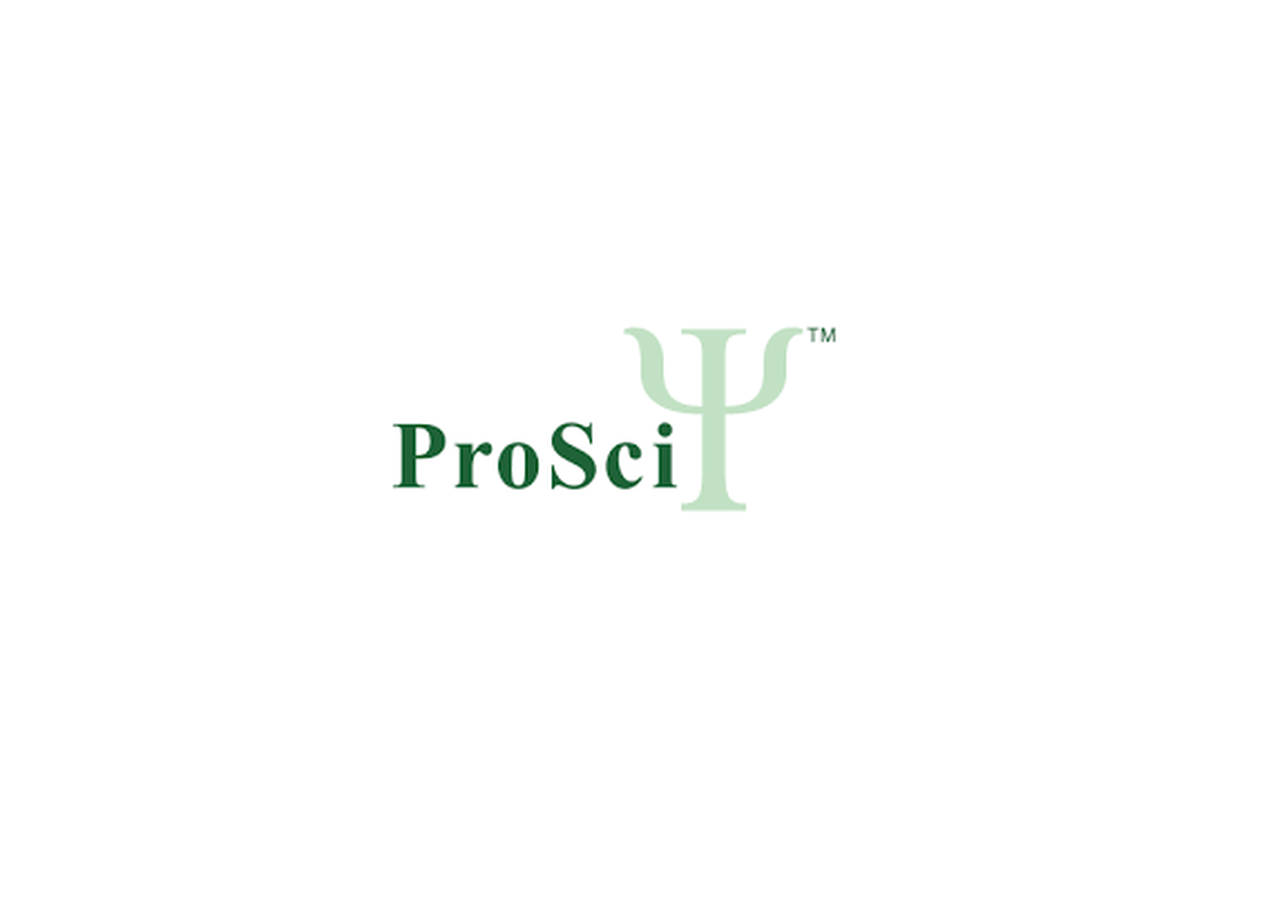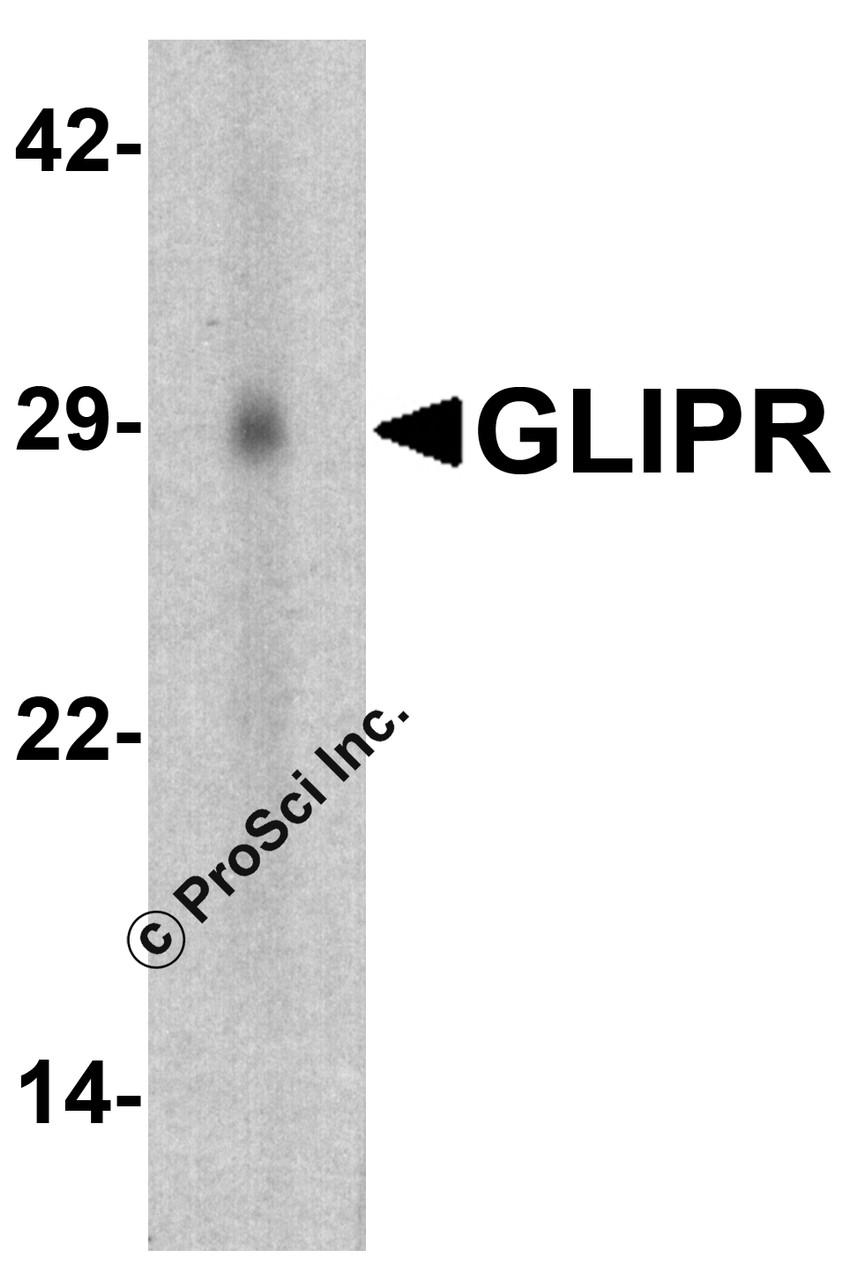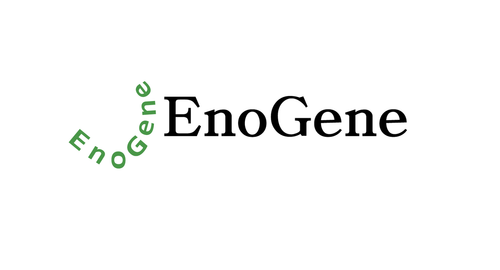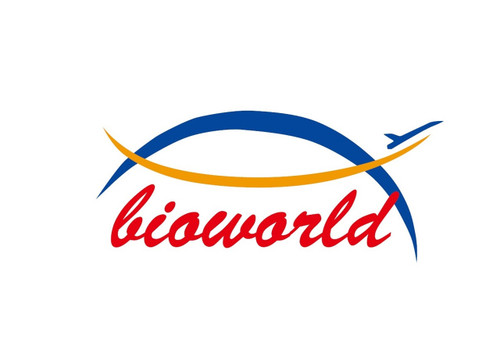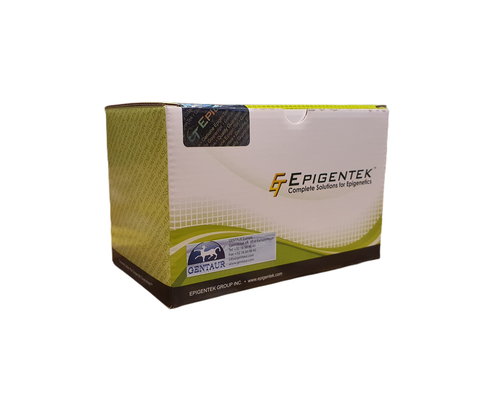Product Description
GLIPR1 Antibody | 7623 | ProSci
Host: Rabbit
Reactivity: Human, Mouse
Homology: N/A
Immunogen: GLIPR1 antibody was raised against an 18 amino acid peptide near the center of human GLIPR1.
The immunogen is located within amino acids 60 - 110 of GLIPR1.
Research Area: Cancer, Cell Cycle
Tested Application: E, WB, IF
Application: GLIPR1 antibody can be used for detection of GLIPR1 by Western blot at 1 - 2 μg/ml. For Immunoflorescence start at 5 μg/mL.
Antibody validated: Western Blot in human samples and Immunofluorescence in human samples. All other applications and species not yet tested.
Specificiy: GLIPR1 antibody is human and mouse reactive. At least two isoforms of GLIPR1 are known to exist; this antibody will detect both isoforms. This antibody is predicted to not cross-react with other GLIPR or GLIPR-like proteins.
Positive Control 1: Cat. No. 1308 - Human Small Intestine Tissue Lysate
Positive Control 2: Cat. No. 11-801 - Human Small Intestine Tissue Slide
Positive Control 3: N/A
Positive Control 4: N/A
Positive Control 5: N/A
Positive Control 6: N/A
Molecular Weight: Predicted: 29 kDa
Observed: 29 kDa
Validation: N/A
Isoform: N/A
Purification: GLIPR1 antibody is affinity chromatography purified via peptide column.
Clonality: Polyclonal
Clone: N/A
Isotype: IgG
Conjugate: Unconjugated
Physical State: Liquid
Buffer: GLIPR1 antibody is supplied in PBS containing 0.02% sodium azide.
Concentration: 1 mg/mL
Storage Condition: GLIPR1 antibody can be stored at 4˚C for three months and -20˚C, stable for up to one year.
Alternate Name: GLIPR1 Antibody: GLIPR, RTVP1, CRISP7, GLIPR, Glioma pathogenesis-related protein 1, Protein RTVP-1, GliPR 1
User Note: Optimal dilutions for each application to be determined by the researcher.
BACKGROUND: The glioma pathogensis-related protein 1 (GLIPR1) is similar to both the pathogenesis-related protein (PR) superfamily and the cysteine-rich secretory protein (CRISP) family (1) . GLIPR1 is a tumor suppressor whose expression is regulated by p53; its increased expression is associated with myelomocytic differentiation in macrophages, whereas decreased expression of this gene through gene methylation is associated with prostate cancer (2) . The GLIPR1 gene is part of a p53 target gene cluster that includes GLIPR1L1 and GLIPR1L2, two highly homologous proteins whose expression patterns vary (3) .
 Euro
Euro
 USD
USD
 British Pound
British Pound
 NULL
NULL

